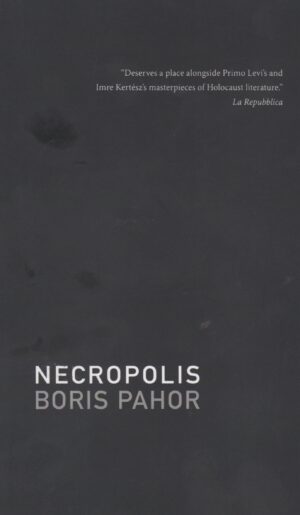
As the newest member of the Greater Mesabi Men’s Book Club (GMMBC), I was charged with providing the book, treats, and beverages for this month’s meeting at Dr. Rich Dinter’s home outside of Hibbing, MN. Given I’m of Slovenian ancestry (one-quarter) and given my first novel, The Legacy, was about Tito and Yugoslavian Partisan resistance to Fascists during WW II, and given I’m attempting to work on another historical novel set in post-WW II Slovenia, I scoured the Internet for a novel that might be of interest to my fellow book club members. Necropolis is the book I settled on.
I’ll admit to making a slight mistake in selecting the book. GMMBC reads exclusively novels, which, on many websites, Necropolis is considered to be. However. In reading the book and checking other sources, it turns out the book is more correctly denoted as “autobiographical fiction”, i.e., memoir. So right out of the gate, I violated the intentions of the club I’d just joined. Ugh.
Anyway, the members were kind and, to a reader, appreciated Pahor’s effort to illuminate an aspect of the Holocaust that gets little attention: the plight of non-Jews who opposed Fascism and found themselves in various Nazi-run concentration camps in Europe. Pahor, who was Slovenian but born and raised in Trieste, which became part of Italy after WW I (remember, Italy spent that war on the side of the Allies; territory including Trieste was Italy’s reward for opposing Austria), was drafted into the Italian army in 1940 and served in Africa. After the Allies cleared the Axis from north Africa, Pahor returned to Trieste and joined the Slovenian Partisans, a group opposing not only the Italians and Germans but Tito’s communist Partisans as well. That stand, one voiced in his writings, got the man into hot water and ended with him being sent to Natzweiler Concentration Camp in France. Given his language skills, Pahor ended up working as a camp medic and that’s where his journey to hell begins.
Pahor’s prose is lyrical and, as one of my book club members pointed out, reminiscent of Ulysses in it’s non-chaptered, stream of consciousness style. In describing the heroism of a young athlete who attempted escape by improvisational pole vaulting over an electric fence, only to be recaptured and executed, the author writes:
A quarter of a century had passed between that “damn you” and the moment when the young Russian spat at an SS commandment here, but the essential qualities of the players had not changed. Slavic pride, Germanic ruthlessness. Indeed, except for love, which indisputably holds first place, high-minded resistance to injustice is the most we can contribute to the salvation of human dignity.
The Russian did not escape Germanic ruthlessness but the image Pahor paints with words is timeless. My only criticism of the book is that, in attempting to ramble through the horrors of Nazi evil in a very personal re-telling of his experiences, coupling history to revisiting the camp (wherein he describes present-day tourists viewing sites he lived through in pain, agony, and dismay), the author leads the reader on a somewhat confusing journey. The retelling is very non-linear and takes some getting used to.
That said, in the end, this is a classic story of the Holocaust, retold by one who survived.
4 and 1/2 stars. The book prompted much in-depth examination by members of my book club.
Peace
Mark


